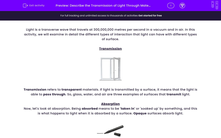Light is a transverse wave that travels at 300,000,000 metres per second in a vacuum and in air. In this activity, we will examine in detail the different types of interaction that light can have with different types of surface.
Transmission
.jpg)
Transmission refers to transparent materials. If light is transmitted by a surface, it means that the light is able to pass through. So, glass, water, and air are three examples of surfaces that transmit light.
Absorption
Now, let's look at absorption. Being absorbed means to be 'taken in' or 'soaked up' by something, and this is what happens to light when it is absorbed by a surface. Opaque surfaces absorb light.
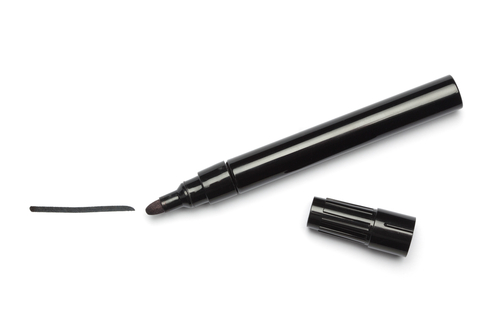
White light contains all the colours of the spectrum (red, orange, yellow, green, blue, indigo, and violet). When white light is completely absorbed by a surface, it means that none of those wavelengths of light are able to be reflected. For example, black ink is black because it absorbs all the colours of white light and does not reflect any of them.
Specular reflection
A third possible effect of light interacting with a surface is reflection. This is when light 'bounces off' a surface. You need to be familiar with the Law of Reflection, which is that the angle of incidence equals the angle of reflection. This is shown in the diagram below:
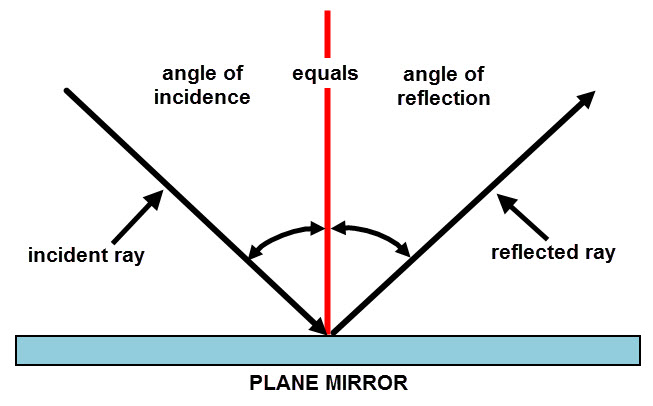
As you can see, the angles are measured against an imaginary line that is at right angles to the surface (shown in red on the diagram), and this is called the normal.
Specular reflection refers to flat, smooth surfaces. If a set of parallel rays of light were reflected at the surface, they will all have the same angles of incidence, and therefore have the same angles of reflection as each other. The result is that the reflected rays remain parallel.
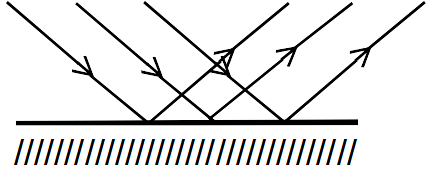
Specular reflection is the reason you can see a clear image of yourself in mirrors, glass, or smooth metal surfaces.
Diffuse scattering
The other type of reflection that can occur at a surface is called diffuse reflection. This is when the surface is uneven. It means that a set of parallel rays of light will all have different angles of incidence, and so they will all reflect in different directions to each other.
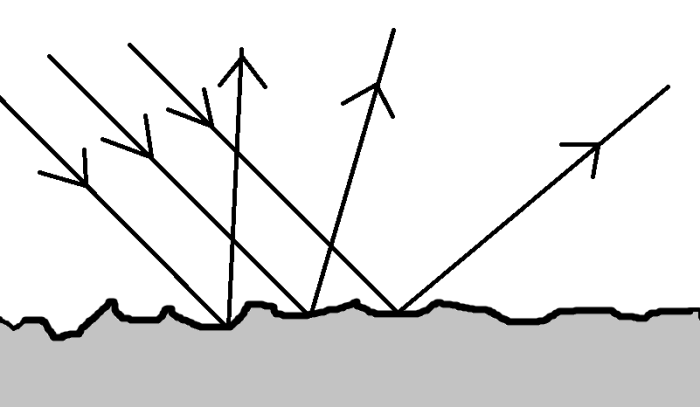
For this reason, you won't be able to see a clear image of yourself in a rough surface.
That's a lot to take in! Shall we have a go at some questions on it now?

